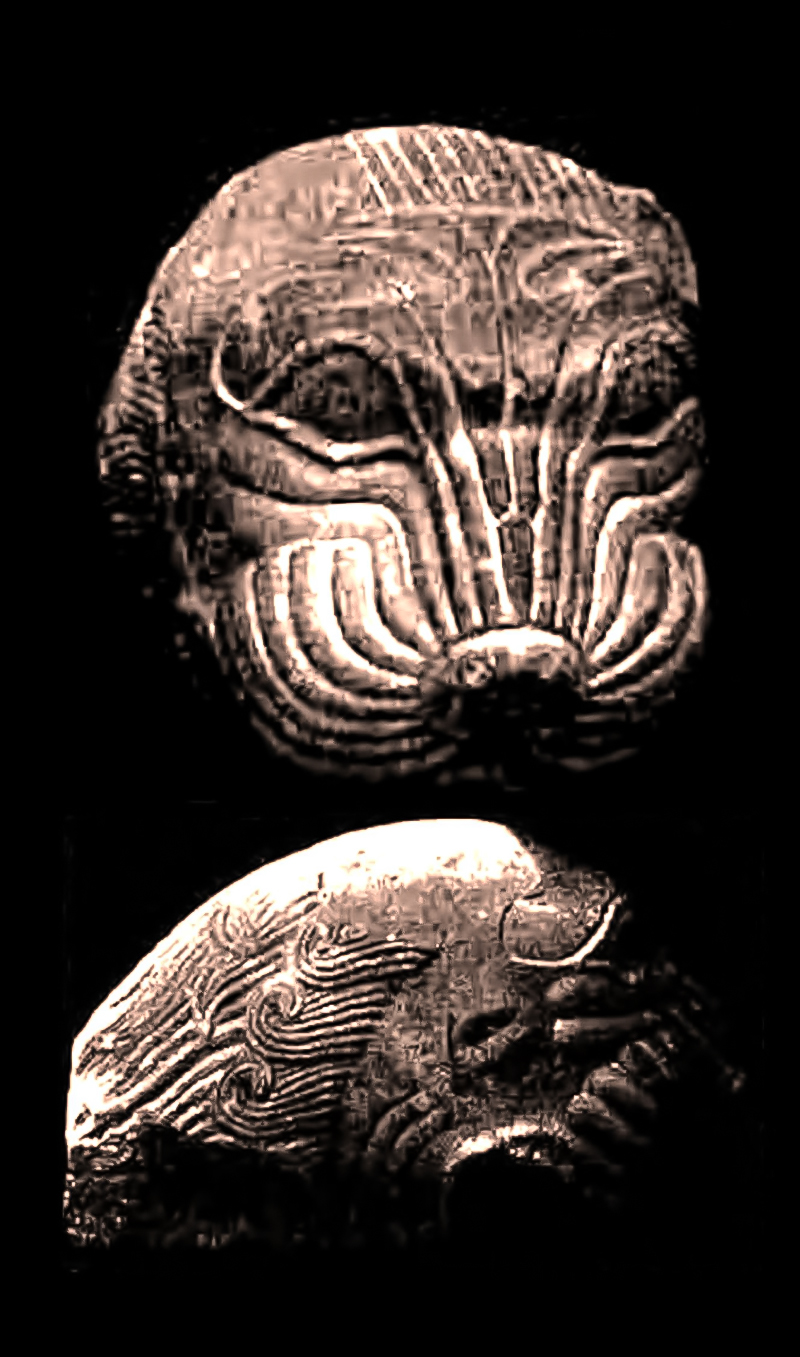Part of a lion’s-head capital carved in polished Chunar sandstone was discovered at Masarh in Bihar, eastern India. It is dated to the fourth or third century BCE, when the region was the political centre of the Maurya Empire (c. 321–185 BCE). Its ears and lower jaw are missing and it is thought to be one of a pair, though neither the second lion nor the column that would have held them have been conclusively found. Such capitals and columns, including the freestanding Ashoka Pillars found in sites across South and Southwest Asia, are considered the most characteristic and influential art historical legacy of the Mauryas; their design and finish are also thought to reveal Persian Achaemenid and Hellenistic influence.
The lion was a common motif in Mauryan art and architecture, symbolising imperial authority and nobility. The compact and highly stylised design of the Mauryan lions closely resembles that of the sculpted lion images used as emblems in the Persian Achaemenid Empire (550–330 BCE), which extended as far east as the Indus River valley. By the time the first Mauryan emperor Chandragupta Maurya (r. 320–298 BCE) established political power, the Achaemenids had fallen to the Macedonian king Alexander (r. 336–323 BCE), but their motifs continued to feature prominently in the cultural production of Southwest Asia under Hellenistic rule.
As Chandragupta expanded his political conquest further west, he established close political relations with the Greek states in the Gandhara region. Ensuing cultural interactions led to an assimilation of Achaemenid-Hellenistic style in Mauryan court art and architecture — this is seen in the pillared halls of some Mauryan cities, as well as the high polish, tapered structure and decorative motifs and capitals of Mauryan stone columns. These were often crowned with animal-shaped capitals frequently depicting lions, bulls and elephants. Whilst scholarly opinion on the symbolism of the lion varies, some suggest that from the mid-third century BCE it came to represent the Shakyasimha, the symbol of the Shakya clan into which the Buddha was born.
The Masarh lion fragment measures approximately 60 x 41 x 45 centimetres. It is likely to have been part of a pair that formed a double-ended capital. The wide open eyes are rendered with exaggerated curves, and the whiskers are highly stylised as a series of uniform, tube-like shapes that follow the curve of the lion’s snout. Both these features are seen in Achaemenid reliefs and free-standing sculptures of lions. Although the lower jaw is missing, the open-mouthed snarl is evident in the representation of tensed muscles around the eyes, snout and jaw through continuous lines carved in low relief — some scholars suggest that this naturalistic attention to detail is likely a product of Hellenistic development of the image. The mane of the lion is rendered in uniform, swirling waves along the head.
Lion capitals made under the later Mauryan king Ashoka (c. 265–238 BCE), such as the four-sided Lion Capital at Sarnath, are less fierce in appearance: their mouths are less open, with the tongue slightly protruding, and the facial muscles not as distended.
The Masarh Lion is housed in the collection of the Bihar Museum, Patna.







